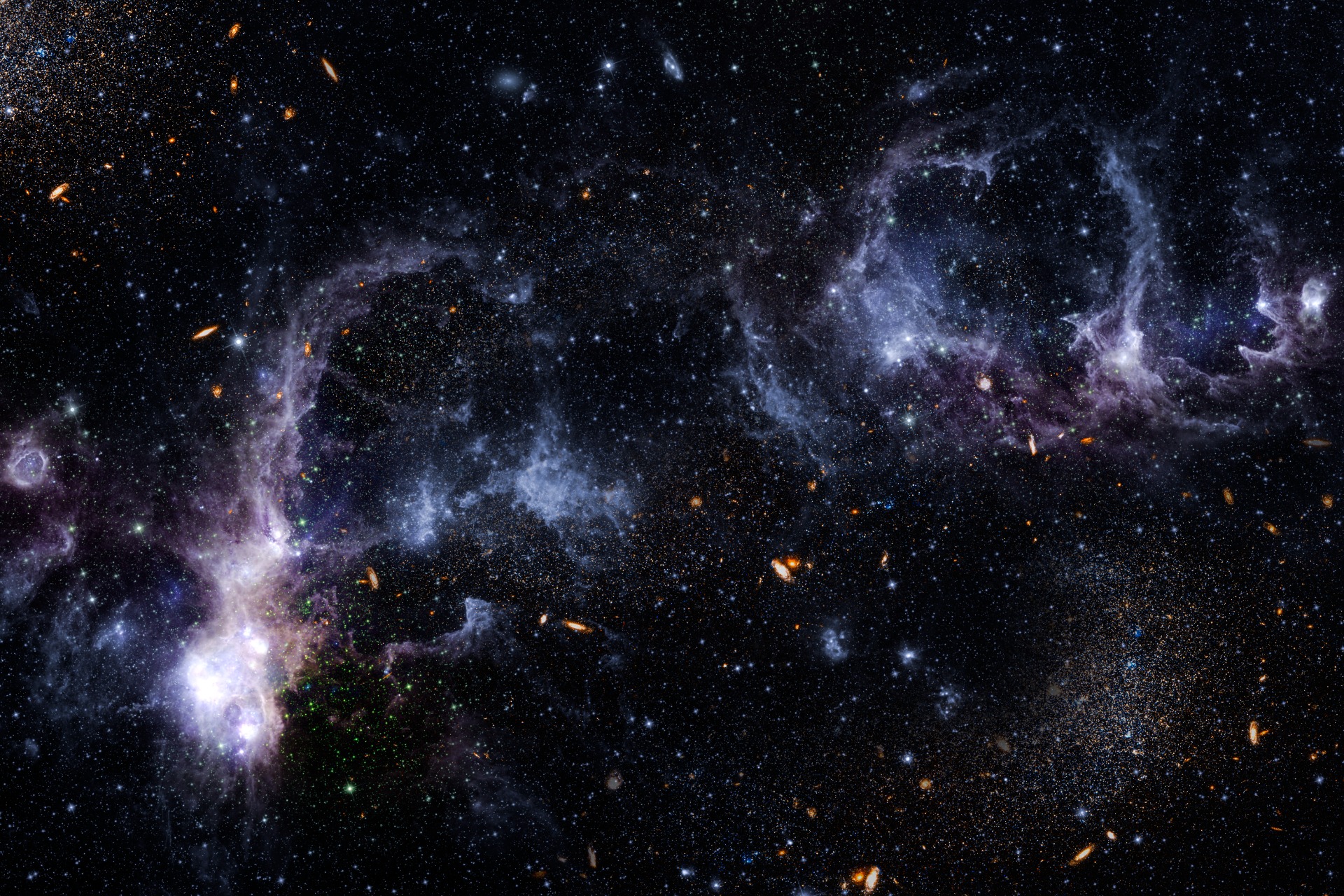
ASTRO SPACE NEWS
A DIVISION OF MID NORTH COAST ASTRONOMY (NSW)
(ASTRO) DAVE RENEKE
SPACE WRITER - MEDIA PERSONALITY - SCIENCE CORRESPONDENT ABC/COMMERCIAL RADIO - LECTURER - ASTRONOMY OUTREACH PROGRAMS - ASTRONOMY TOUR GUIDE - TELESCOPE SALES/SERVICE/LESSONS - MID NORTH COAST ASTRONOMY GROUP (Est. 2002) Enquiries: (02) 6585 2260 Mobile: 0400 636 363 Email: davereneke@gmail.com
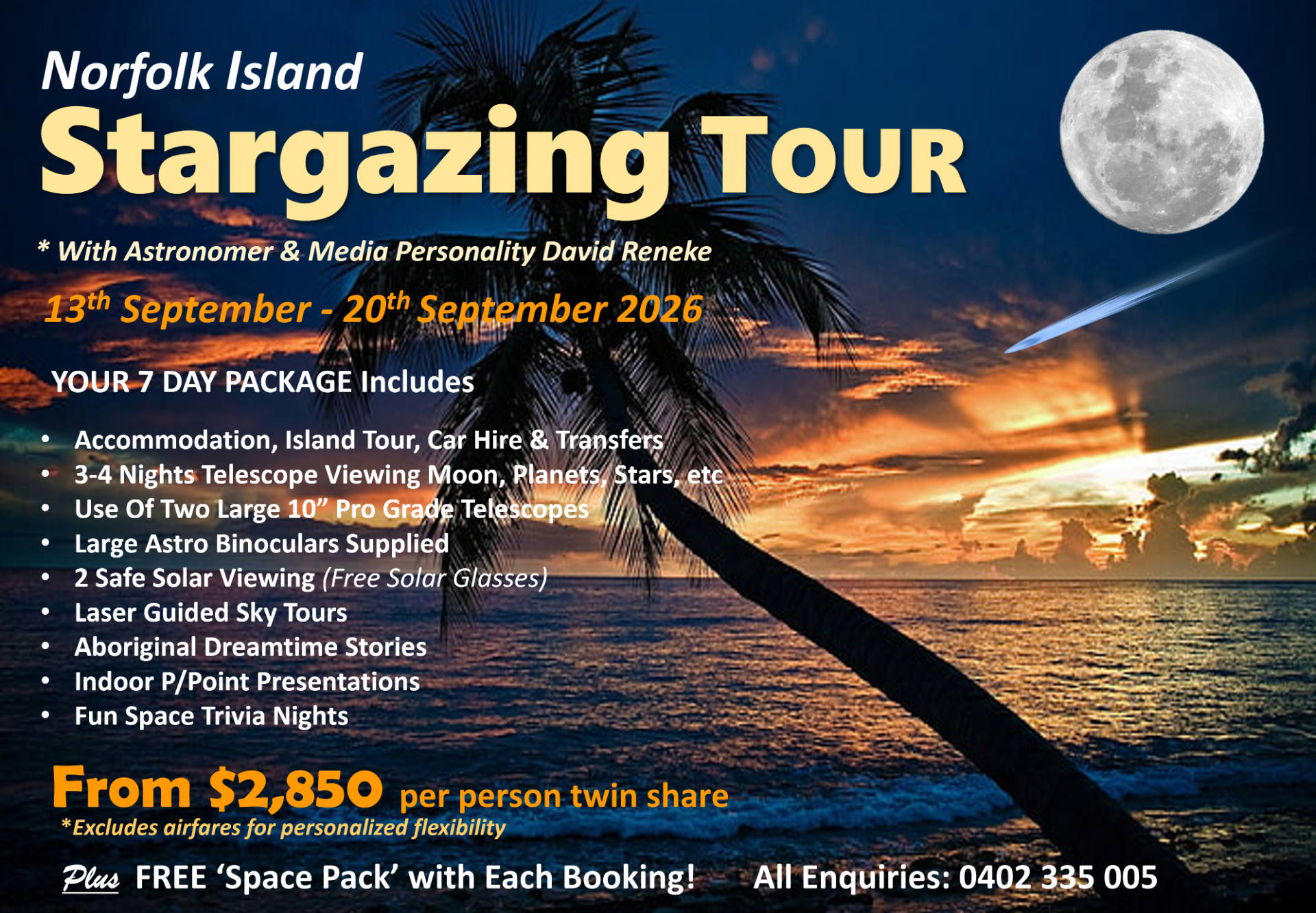
Over the past four years, the Norfolk Island Stargazing Tours have become one of the island's most talked-about night-time attractions. Led by astronomer and science communicator Dave Reneke, each tour has offered visitors a relaxed and entertaining look at the southern sky. Guests have handled real meteorites, examined genuine fragments of Moon rock, learned sky lore from ancient cultures, and viewed deep-sky objects through quality telescopes under some of the darkest skies in the Pacific. Reneke's trademark humour and clear explanations have made the sessions accessible to newcomers and unforgettable for seasoned skywatchers. Every year has sold out, with visitors consistently praising the combination of science, storytelling, and Norfolk's extraordinary night sky.
Get ready for another unforgettable journey into the cosmos. In September 2026, Astronomer Dave Reneke returns to Norfolk Island to host the next chapter in his acclaimed Stargazing Tour series.
This upcoming tour will deliver the same winning formula that keeps guests coming back: crystal-clear island skies, hands-on astronomy, and Reneke's engaging, down-to-earth style of storytelling. Across several nights, participants will enjoy telescope sessions targeting the best seasonal objects, from star clusters and nebulae to southern-sky showpieces rarely seen outside this latitude. Guests will once again get the rare chance to hold real space material, including meteorites and genuine Moon fragments, while learning how these relics connect us to the birth of the solar system.
Expect riveting sky talks, practical observing tips, and an easygoing atmosphere perfect for beginners and enthusiasts alike. With limited places and strong demand every year, the 2026 Norfolk Island Stargazing Tour is set to fill quickly. Bookings open NOW. Join the adventure, look up, and discover why Norfolk Island remains one of the most remarkable stargazing destinations on Earth. Enquiries: Dave 0400 636 363
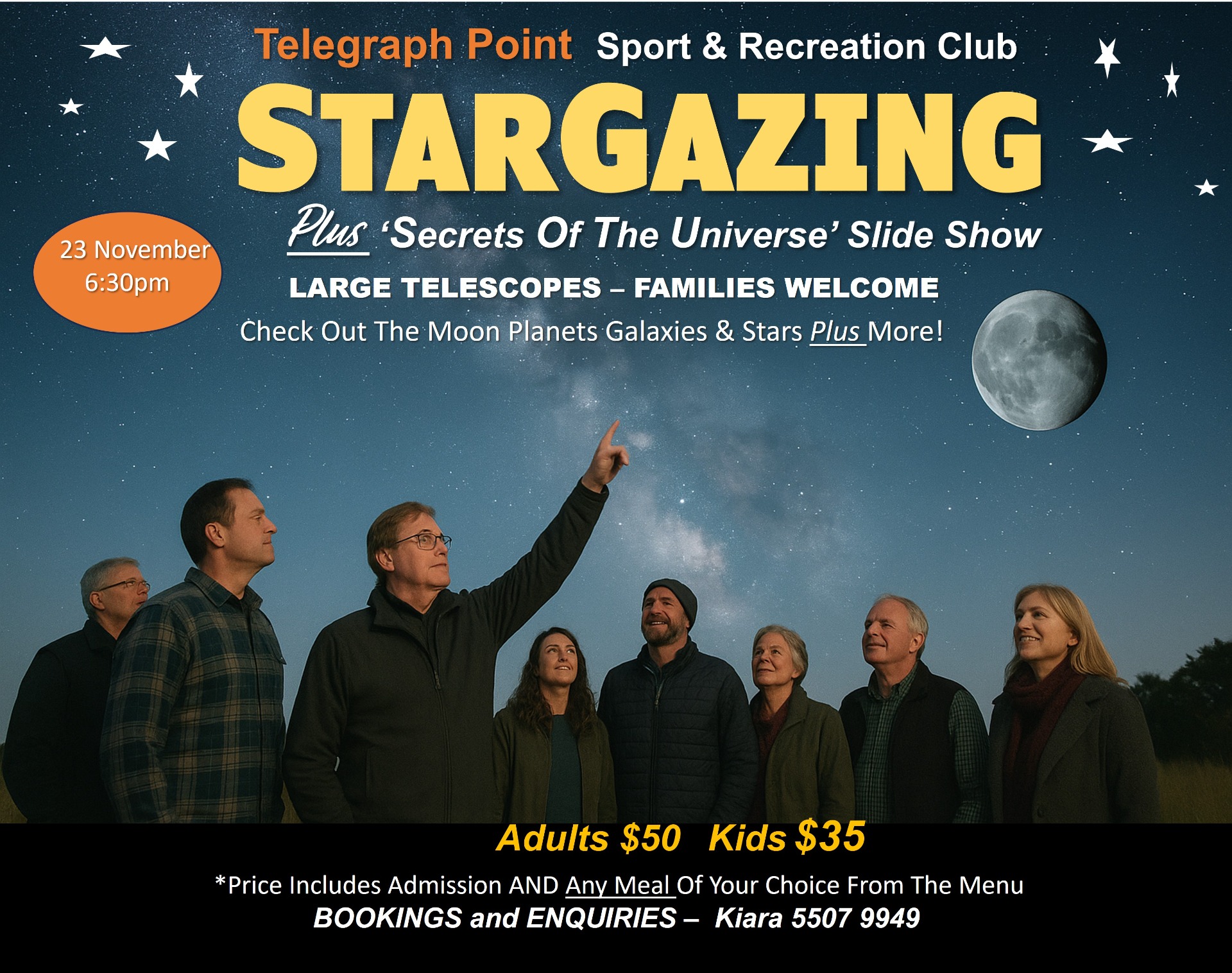
STARGAZING NIGHT - Ask Yourself Have You Ever... Touched a real space rock? Seen the rings of Saturn? Viewed star clusters 17,000 light years away? Seen the craters and 'seas' on the Moon up close... or just looked through a large telescope?
View Planets, Exploding Stars, Clusters - Take a Laser Guided Sky Tour Indigenous Sky Stories - Hold a Real Meteorite - See a Real Piece of Moonrock. Kids Catered for!
With world renowned astronomer, lecturer and media personality Dave Reneke as your guide you'll view amazing planets, stars, clusters & constellations. David is an expert astronomy lecturer, writer, author and heard on over 50 radio stations across Australia each week! Designed for those with no knowledge of astronomy this talk is covered in simple, easy to understand terms.

-
The recent UFO disclosure has sparked intense interest and debate, with many wondering if this is the moment we've been waiting for – the moment when the government finally comes clean about extraterrestrial life. However, a closer look at history suggests that this might just be another false alarm.
Let's be clear: the idea that governments have been hiding information about UFOs is not new. In fact, there have been numerous alleged disclosures and whistleblower claims over the years, only to have them dismissed or debunked. The Rendlesham Forest incident, the Roswell crash, and the Phoenix Lights are just a few examples of cases that were initially touted as proof of alien life, but ultimately led nowhere.
So, what makes this new disclosure different? According to officials, it's the alleged involvement of high-ranking military personnel and the release of previously classified documents. However, without concrete evidence, it's difficult to separate fact from fiction. The lack of transparency and accountability in the past has eroded trust, making it challenging to take these claims at face value.
One notable aspect of this disclosure is the increased scrutiny on the government's handling of UFO sightings. The establishment of the All-domain Anomaly Resolution Office (AARO) and the release of declassified documents suggest a shift in attitude towards greater transparency. However, it's essential to approach these developments with a healthy dose of skepticism, given the track record of broken promises and cover-ups.
The reality is that we've heard it all before. Whistleblowers have come forward, only to be discredited or silenced. Governments have promised transparency, only to reveal more questions than answers. It's natural to be jaded, and many are expecting this latest disclosure to follow the same path – a fleeting moment of excitement, followed by silence and inaction.
That being said, it's crucial to acknowledge the significance of this moment. The growing recognition of UFOs as a national security concern and the willingness of officials to speak publicly about the topic is a notable shift. The question is, will this momentum be sustained, or will it fizzle out like so many previous attempts at disclosure?
In conclusion, while the latest UFO disclosure is intriguing, it's essential to approach it with a critical and nuanced perspective. We've been here before, and the outcome is far from certain. The possibility of extraterrestrial life is tantalizing, but let's not get our hopes up just yet. As with any claim, evidence is key, and until we see concrete proof, skepticism is the best approach.
Mach-23 potato gun to shoot satellites into space
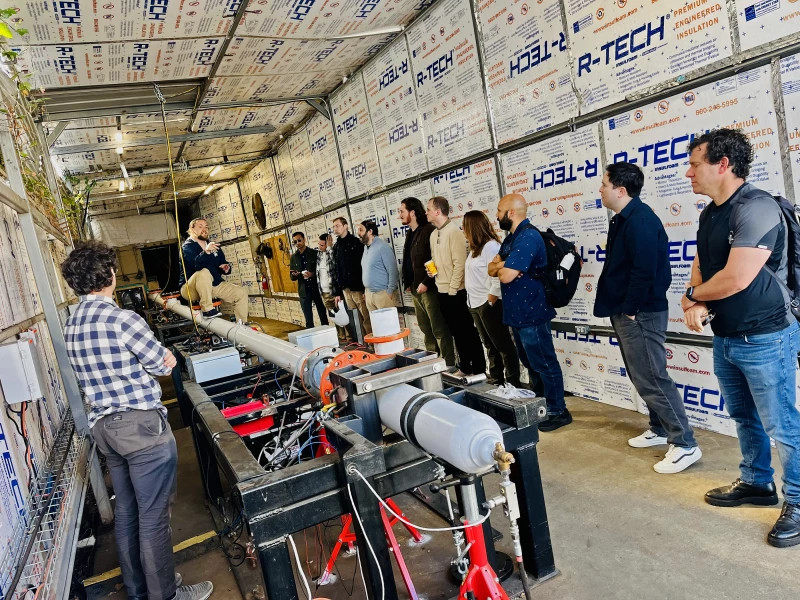
"What can we do to radically drop the price of launch in the next 10 years?" That's the question Mike Grace keeps asking—and he's not whispering it into the void. Grace is the CEO and founder of Longshot, a company quietly stepping into the limelight with an audacious idea: getting payloads into space without rockets.
If your first reaction is "Longshot who?" you're not alone. Until recently, I couldn't have picked them out of a lineup, either. SpinLaunch? Sure, that one rings a bell. But Longshot? Not so much. Still, when the boss forwarded me an email saying, "I'm flat out, but Joe will be up for this," I figured it was worth a look. Loz has known me for more than a decade; if he says it's my kind of madness, he's usually right.
That's how I found myself sitting down with Grace—part engineer, part visionary, part human question mark—and listening to a plan that sounds like it was sketched in the margins of a sci-fi novel. The aim? To develop a colossal, ground-based launcher capable of hurling payloads skyward at staggering speeds. No boosters. No towering rockets. Just brute-force physics and a machine built to treat orbital delivery a bit like a cosmic slingshot.
If this all feels faintly familiar, there's good reason. A couple of years back, Loz wrote a story with the eyebrow-raising phrase "Nazi über-cannon" in the headline. That article pulled me straight down the rabbit hole—an exploration of historical mega-gun concepts and how a modern company was adapting the underlying principles, minus the sinister baggage, to pitch a new way of reaching orbit. It sounded like the fever dream of an over-caffeinated engineer armed with a physics textbook and a pile of ambition.
Now Longshot seems ready to push that idea even further. Grace isn't shy about the scale of the challenge. He's blunt: space access is still too expensive, too slow, too dependent on complex, failure-prone rocket systems. If the world wants mass orbital delivery, daily launches, and cheap access to space, something has to give—and in his eyes, rockets as we know them simply won't cut it.
His proposal is simple in concept, monstrous in execution: build an enormous, high-velocity launcher capable of accelerating payloads to Mach speeds, then letting the atmosphere and momentum do the rest. Yes, it sounds like someone scaled up a 23-potato-gun backyard experiment and pointed it at the sky. But unlike the YouTube version, this one has serious engineering behind it—and serious investment interest.
Grace argues that if someone doesn't try a radical approach like this now, we'll still be paying premium prices for launches in a decade. And while it may sound wild, disruptive ideas often do—right until they work.
Is Longshot the company to pull it off? Hard to say. But Grace's conviction is undeniable, and the concept forces a tantalising question: what if getting into orbit didn't require a roaring column of fire at all? What if we could simply… launch?
Whether this project becomes the next big leap or just a fascinating footnote in the history of spaceflight, one thing is certain: the future of getting off this planet is changing, and it might just arrive with a bang.
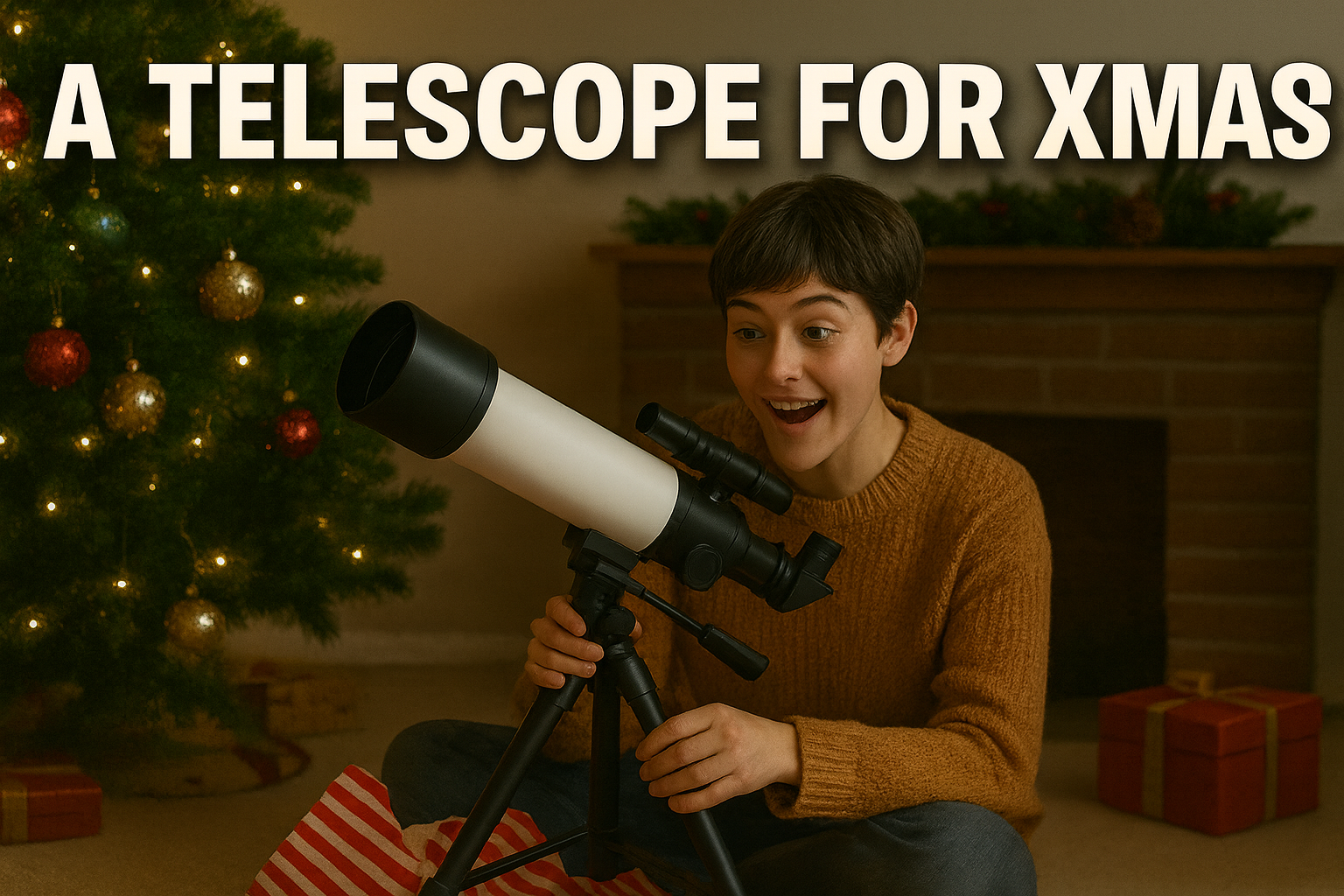
This week we're diving into telescopes again — the Christmas kind! What's sitting at the top of your wish list this year? If exploring the night sky is part of your new year plans, then a great telescope is your passport to the universe. And honestly, in the space age we're living in, there's never been a cooler time for a young person to start stargazing.
I'm constantly asked what telescope people should buy, and the honest answer is simple: get the best one you can sensibly afford, and — most importantly — the one you'll actually use. I've lined up some solid tips for you, so pay attention! And remember, you've got less than four weeks to make that decision count.
These days every telescope is a balancing act between price and performance. In the world of beginner scopes, there's a forest of junk out there, but genuine entry-level instruments aren't too pricey. Expect to put aside at least $250 for a decent, reliable beginner telescope in Australia.
You can find scopes around the $100 mark, sometimes less, but tread carefully. Many are built to look impressive while delivering the optical equivalent of fogged-up sunglasses. Their mechanical parts often match that quality.
Above all else, ignore those dazzling, full-colour photos of planets splashed across the boxes of bargain-bin scopes, along with the ridiculous claims of "1,000× magnification." Those images are marketing bait, nothing more. You won't see anything like that unless you're using the Hubble Space Telescope — and you already know the price tag on that one!
Skip department stores entirely; they usually lack the expertise needed. Choose a specialist telescope dealer or, in some cases, a knowledgeable camera shop. A proper telescope retailer can figure out your needs and point you toward something that won't become a dusty ornament by February.
The mount, surprisingly, is almost as important as the telescope itself. Make sure the one supplied with your chosen scope is smooth, steady, and built like it wants to stay upright. If you can lift the whole setup with one hand, it'll wobble at the first hint of a breeze, and you'll invent new vocabulary you didn't know you had. Avoid that experience!
For brand-new astronomers, learn the constellations first, then grab a pair of binoculars to hunt your first "deep sky" gems — star clusters, bright nebulae, and planets. On a tight budget? Ask Santa for quality binoculars; they reveal far more than you might imagine. They're really just double telescopes, after all. I still use mine every clear night.
It's wild to think the International Space Station has clocked up 25 years. As large as a football field, shared by 16 nations, and visible right here in Australia, it's a marvel of our era. You can spot it passing over Wauchope and nearby areas via several good free apps on your phone or tablet.
Imagine experiencing 16 sunrises and 16 sunsets every day! Now that's a job. Clear skies! And if you're telescope-shopping this Christmas and want guidance, I'm available for lessons and buying advice, plus we can arrange a lesson or two after the event on a field night with my group, Mid North Coast Astronomy, if you're down my way.
Weather permitting, we meet monthly here in Wauchope and don't forget, we're running our yearly 'Stargazing Tour' to Norfolk Island again next year. Details on my website www.davidreneke.com Ph 0400 636 363
A Lifeboat in Orbit: China's Overnight Rescue Mission
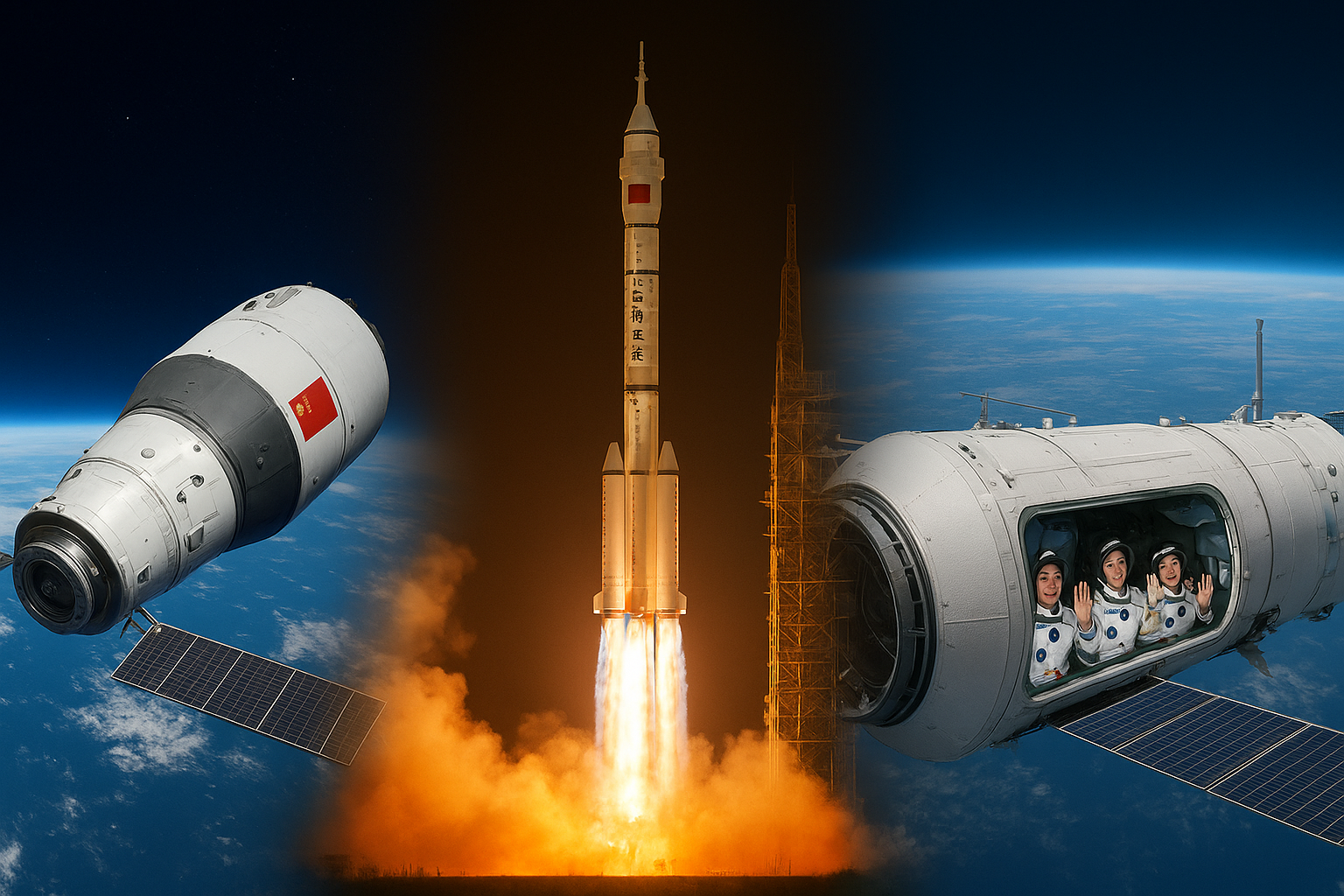
In the quiet hours of tonight, while most of us are settling into Sunday evening routines, China will attempt one of the most delicate operations in human spaceflight: launching an empty spacecraft to act as a lifeboat for three astronauts currently living aboard the Tiangong space station.
It sounds like something straight out of a space-thriller — a crew in orbit awaiting a rescue craft — but this is very real, very technical and, above all, very carefully planned.
At the centre of the operation is Shenzhou 22, an uncrewed spacecraft set to ride into the early-morning sky atop a Long March 2F/G rocket. The launch is scheduled from the Jiuquan Satellite Launch Center, nestled deep in the Gobi Desert, during a 30-minute window beginning 11:11 p.m. EST on Nov. 24 (0411 GMT, Nov. 25 / 11:11 a.m. Beijing Time).
Although the Shenzhou ships are normally used to ferry astronauts up and down from Tiangong, this one has a different purpose entirely. Its mission is to serve as a backup return vehicle, ensuring a safe ride home should the need arise for the three astronauts currently on the station. China has not reported an emergency on Tiangong — but in spaceflight, redundancy is survival. The existing crew return craft apparently requires replacement, and the safest option is to send another spacecraft immediately.
This is a reminder of the unforgiving nature of living off Earth. In orbit, everything depends on systems working perfectly: docking ports, engines, environmental controls and the famously critical heat shields designed to survive a fiery plunge through the atmosphere. When even a hint of an issue appears, no agency takes chances. NASA has done this before, sending multiple shuttles or spacecraft when contingencies arose. Now China is demonstrating the same disciplined caution.
The timing is also significant. Launching within such a tight orbital alignment window ensures Shenzhou 22 can rendezvous efficiently with Tiangong, slipping into the station's orbital plane with minimal fuel use. From there, it docks automatically — no pilot required — and quietly becomes a guaranteed escape option.
For China's space program, this mission underscores two points. First, the nation is now operating a continuously crewed space station with the confidence and procedures expected of a major spacefaring power. Second, human spaceflight carries inherent risks that nations must be prepared to manage on short notice. Tonight's launch shows that China has joined the league of countries capable of responding quickly to protect their astronauts.
There's an undercurrent of drama to all of this. Three people are orbiting Earth at 28,000 km/h, relying on ground teams more than 350 km below to send up an emergency spacecraft that will simply "wait" beside their station like a cosmic getaway car. It's a quiet reminder that no matter how routine spaceflight may appear, the margin between comfort and danger is razor thin.
In the next day or so, if all goes well, Shenzhou 22 will dock, the crew will gain their backup exit, and the world will move on. But behind the scenes, this launch represents another milestone in the growing maturity of China's human spaceflight program — a snapshot of what it means to operate a space station responsibly, professionally and with astronauts' lives always at the forefront.
And for those three orbiting inhabitants of Tiangong, it means something simpler: peace of mind. On a space station, that may be the most precious commodity of all.
A high speed sci-fi spacecraft concept that could get us to Mars within 30 days!
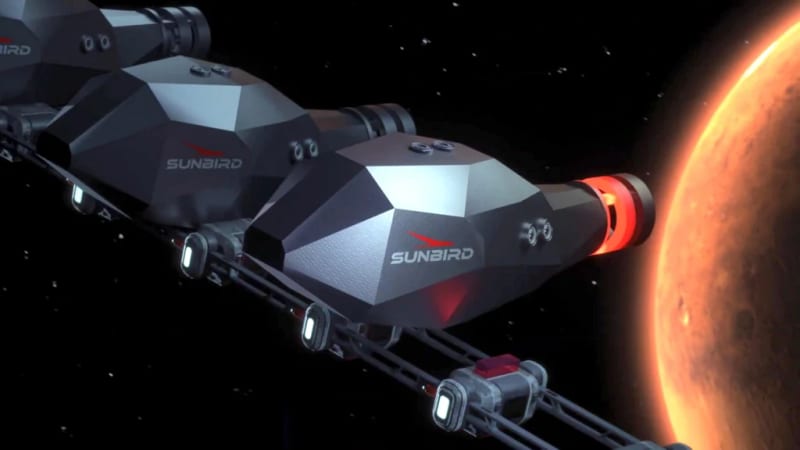
Engineers around the world are now testing a new generation of hypersonic engines, especially rotating-detonation designs where fuel ignites in a controlled circular shockwave. This produces far more power and efficiency than standard combustion and could push aircraft to Mach 8 or even Mach 10. If these engines scale as planned, a Sydney–London trip in about two hours is no longer a fantasy but a realistic engineering goal for the next couple of decades. Some companies are also developing near-space aircraft that skim the edge of the atmosphere, switching from air-breathing engines to rocket assist at high altitude. With far thinner air and far less drag, the speed gains can be enormous.
At the same time, space laboratories are reporting major progress in plasma-electric propulsion. These engines ionise hydrogen and accelerate it using magnetic fields, producing exhaust velocities of around 100 kilometres per second in recent tests — far beyond anything a chemical rocket can achieve. That kind of performance shrinks the journey to Mars from nine months to roughly 30 to 60 days. A parallel effort is underway to perfect a centrifugal nuclear-thermal engine that spins molten uranium to superheat hydrogen propellant. It offers the thrust of a chemical rocket with the efficiency of a small reactor, making it ideal for deep-space missions and heavy cargo.
Although today's prototypes generate only modest thrust, measured in newtons, they've demonstrated the one thing researchers have chased for decades: stable, controllable operation with far greater efficiency than any current engine. This has sparked a surge of investment from both government agencies and private space companies.
Put together, these advances point to a future where ultra-fast intercontinental flights become routine and travel across the Solar System becomes a practical engineering exercise rather than a year-long expedition. These are no longer science-fiction ideas. Early engines exist, they work, and if progress continues at this pace, they could revolutionise both aviation and spaceflight within a generation.
Building a Permanent Self Sustaining City On Mars By 2050

Elon Musk has outlined one of the most ambitious plans in human history: building a permanent, self-sustaining city on Mars by 2050. Using SpaceX's fully reusable Starship rocket, Musk aims to transport 1 million people to the Red Planet through a series of daily launches during optimal launch windows. His vision is to create a thriving Martian settlement with jobs, industries, and the infrastructure needed for long-term human survival.
• SpaceX plans to build a fleet of 1,000 Starships, each capable of carrying up to 100 passengers at a time.
• Launches would be scheduled daily during the Earth-Mars alignment, which happens roughly every 26 months.
• The city would rely heavily on solar power, local resource mining, and in-situ fuel production using Martian ice and atmospheric CO₂.
• Musk expects thousands of jobs on Mars, including construction, farming, mining, engineering, life-support maintenance, and scientific research.
• Starship's reusability dramatically reduces launch costs, making interplanetary travel more accessible over time.
• The long-term goal is to make humanity a multi-planetary species, reducing the risks of extinction from natural or man-made disasters.
• Early missions will focus on cargo transport, preparing habitats, and building essential life-support systems before mass human arrival.
"When Distance Disappears: The Coming Age of Teleportation"

Teleportation has long been the crown jewel of science-fiction fantasies, the kind of thing starship crews do with a casual tap on a glowing panel. But the idea no longer sits fully in the realm of fantasy. In small but astonishing steps, scientists have already shown that nature itself allows something eerily close to instant transfer. Imagine stepping into a small room and finding yourself on the surface of Mars before you take your next breath, or popping over to Tokyo for a cup of tea and returning home before it cools. That's the dream—and the dream now has real physics behind it.
The key lies in quantum mechanics, a world where the usual rules of common sense simply don't apply. Researchers have succeeded at teleportation—not of people, but of information carried by tiny particles. Using quantum entanglement, they've made the state of one particle appear in another, even when separated by large distances. This isn't speculation or theory; it's been done repeatedly. Over the years, teams have teleported quantum information across a lab, across 1.3 kilometres of open air, and even to a satellite orbiting 1,400 kilometres above Earth. The universe, it turns out, quietly allows instantaneous transfer of a particle's information.
That discovery opens a thrilling door. If information can hop instantly, communication might one day do the same. Spacecraft could maintain real-time contact with Earth without minutes or hours of delay. A network of quantum-linked computers could share data instantly from one planet to another, forming a kind of early galactic internet. Messages that today crawl across space at light-speed would, in the far future, arrive the moment they are sent.
Of course, sending a person is a different challenge entirely. We are made of staggering amounts of information. Even scanning a single human being at a fundamental level is beyond anything modern technology can approach. But the idea itself—scanning, transmitting, and rebuilding a person—isn't forbidden by physics. A body is simply atoms arranged in a particular pattern. Information is what defines that pattern. Teleportation doesn't necessarily require moving the atoms themselves, only the instructions. If a future machine were able to read the blueprint, transmit it instantly, and reassemble matter at the destination, then teleporting a person would, in principle, be possible.
It raises enormous implications. Breakfast in Paris and lunch back home wouldn't be a luxury; it would be normal life. Trips to the Moon or Mars would no longer require rockets roaring into the stratosphere. Equipment could be moved between worlds with no launches at all. If the technology matured far beyond our current imagination, even visits to planets orbiting other stars might happen the moment you decide to go. Our galaxy would shrink to the size of a neighbourhood.
We are nowhere near that point, but the early experiments are real and hugely important. They're the Wright Brothers' first flights—fragile, limited, but history-making. The fact that the teleportation of quantum information works at all proves that nature permits the underlying principle. And that alone is a staggering thought. It means the leap from laboratory tricks to planet-to-planet communication isn't fantasy—it's a technological challenge waiting to be solved. Each new experiment brings that future one fraction closer.
The honest expectation is that teleporting people, if it ever becomes possible, could be centuries away. But today's progress already hints at a future where instant contact across the Solar System becomes routine. Once information teleports freely between planets, human travel will eventually follow. The very idea of distance will change.
Teleportation has quietly taken its first steps, and those steps echo with the possibilities of an entire universe opening up. What was once the stuff of starship dreams is now a field of active research. We can already teleport the tiniest particles across vast distances. One day, perhaps far down the timeline, we may teleport messages, machines, explorers—and maybe even ourselves. If that day arrives, everything about travel, exploration, and humanity's relationship with the cosmos will be transformed. The stars won't just be out there. They'll be a step away.
The Moss That Went To Space — And Came Back Stronger
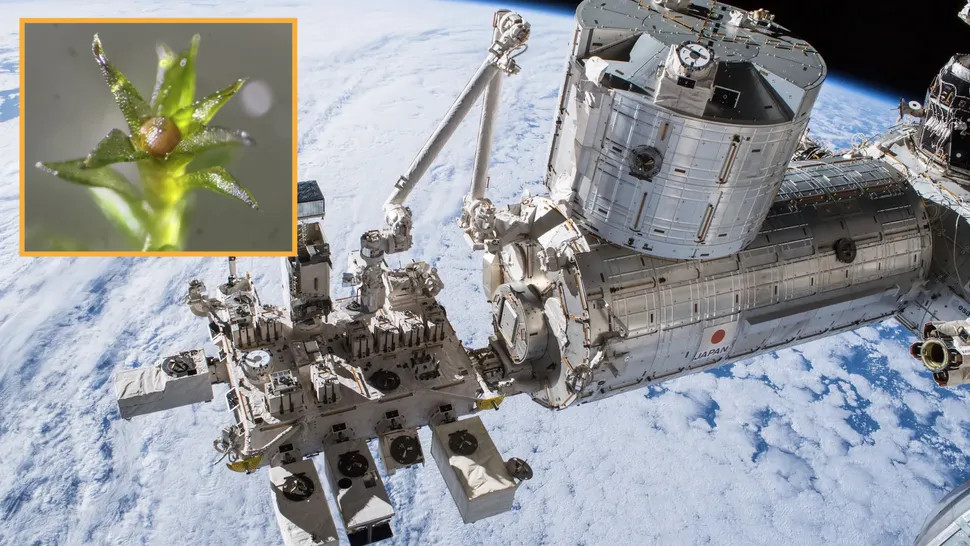
It's not every day that a small, slow-growing plant becomes the hero of a space story. Rockets, rovers, and astronauts usually hog the spotlight. But a recent experiment has pushed an unlikely contender onto centre stage: moss. Not just any moss, but a hardy little species that spent nine months clinging to the outside of the International Space Station — and lived to tell the tale.
Yes, scientists stuck moss onto the outside of the ISS, exposed it to brutal radiation, vacuum, temperature swings that would make Antarctica blush, and the complete lack of anything resembling a comfortable environment. For most living things, this is a quick ticket to oblivion. But this moss had other ideas.
The experiment, led by researchers looking to understand how simple life copes with space conditions, involved fastening small samples of the plant to the station's exterior. For nine long months, the moss endured everything space could throw at it. No protective dome. No gentle shade. Just raw survival on the edge of our planet.
And when the samples returned to Earth? Eighty percent sprang back to life and kept on growing.
That number surprised even the scientists involved. It suggests that moss — one of Earth's oldest and simplest plants — has a built-in toughness that borders on astonishing. Think of it as nature's version of that neighbour who insists they "don't need sunscreen" while everyone else is melting. Only in this case, the moss really doesn't.
The implications stretch far beyond botany. If a modest plant can shrug off the vacuum of space, what else might endure out there? What does this say about life's ability to travel between worlds? Could tiny organisms hitch a lift on rocks blasted off one planet and land safely on another — a concept scientists call panspermia? It's still unproven, but experiments like this give the idea a little more weight.
There's also the question of the future. If humans hope to live on the Moon or Mars, we'll need more than fancy gadgets — we'll need life that can handle the environment. Moss is no candidate for a Martian salad, but its resilience could help shape regolith, stabilise soil, or even act as a starter for closed ecological systems. At the very least, it shows that Earth life has more tricks up its sleeve than we once thought.
And the image itself is irresistible: while astronauts float inside the station checking readings and sipping rehydrated coffee, a handful of tiny green pioneers are clinging to the outside bolts, riding through day-night cycles that flip from scorching sunlight to icy darkness every 90 minutes. If you were writing a sci-fi adventure, you'd struggle to invent a more unlikely crew member.
Once the experiment ended, the returning moss didn't sulk or collapse. It simply resumed what moss does best: growing slowly, steadily, stubbornly. You can almost hear it saying, "Space? Yeah, I've seen it."
It's a reminder that life on Earth began small and simple — and those early forms were built to survive much harsher conditions than most modern creatures ever face. In a way, this experiment reaches backward in time as much as forward, hinting at the raw durability of ancient life.
So the next time you brush past a patch of moss on a fallen log, remember: you're looking at a survivor. A champion of resilience. A plant so tough that when scientists strapped it to a space station and left it to bake and freeze for nearly a year, it came home and kept right on going.
We chase grand cosmic answers with giant telescopes and billion-dollar missions. But sometimes, a tiny green clump the size of a postage stamp can whisper something just as powerful: life is stubborn, adaptable, and always full of surprises. And if moss can thrive where it has no business thriving, imagine what the rest of us might achieve once we set our sights a little higher.
Scientists just discovered a new crater on the moon — they call it a 'freckle'
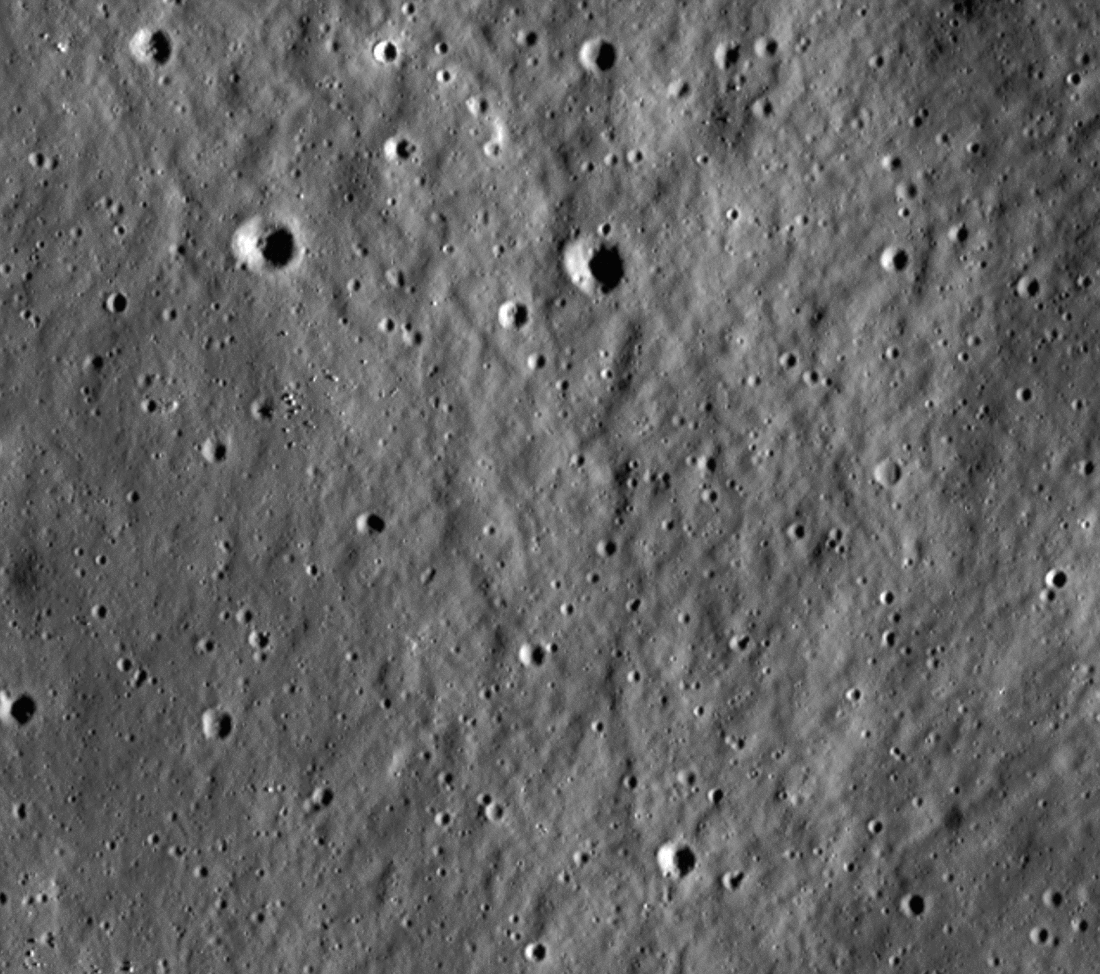
The headline says it all: The list of our moon's craters just got a little longer. On Nov. 13, the Lunar Reconnaissance Orbiter Camera (LROC) team — which operates visual equipment on NASA's Lunar Reconnaissance Orbiter (LRO) — announced the discovery of a never-before-seen dent in Earth's natural satellite. It appears to be about 72 feet (22 meters) in diameter, probably formed between December 2009 and December 2012 and comes from a collision scientists say happened just north of another lunar cavity, Römer crater.
"Over time, the rays will darken to the shade of the surrounding regolith as the material is exposed to space weathering," the LROC statement reads. It's also notably small, as the team refers to it as a "freckle" on the moon. Finding new craters on the moon is "essential for understanding impact rates and crater degradation rates over time, as well as for planning safe, successful missions to the moon," the statement adds.
The latter point is particularly important, as several nations are racing to get boots back on the moon, including NASA. NASA's Artemis moon program, presently slated to roll out over the next decade, intends to land humans on the moon for the first time since 1972. As a result, scientists have been meticulously trying to learn about the safety of the selected landing zone, a large region near the moon's south pole.
For instance, you have to take into consideration how good communication with Earth will be from a certain location, what the general terrain is like and what lighting conditions might be, as shadows on the moon can be tricky. Some experts are even taking into consideration seismic conditions (moonquakes, basically). So, presumably, a landing zone with an unexpected crater could spell disaster for such a mission. The more we know about our moon's dented body, the better.
How Big Is Space?
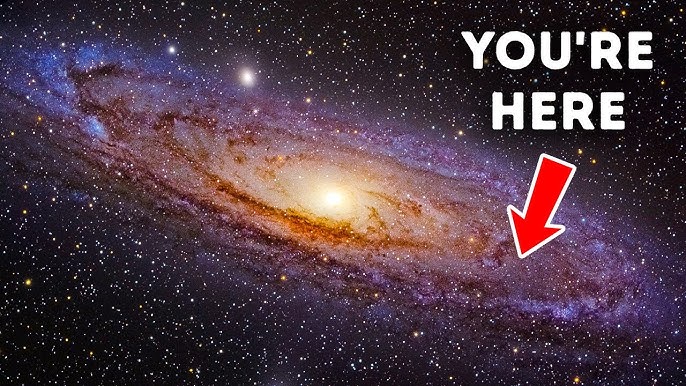
Ever tried to wrap your head around the size of space? Good luck. You'd have better luck folding a fitted sheet in zero gravity. Space isn't just big—it's absurdly, terrifyingly, hilariously massive. But let's try to get a grip on it anyway.
Start with something we kind of understand driving. Imagine hopping into your car and setting your GPS for Pluto. It's not exactly around the corner—it's the most distant planet-like thingy (sorry, Pluto) in our solar system. Cruising at a relaxed highway speed of 100 km/h, you'd arrive in a mere… 6,000 years. That's longer than recorded human history. Better pack snacks.
That's just our solar system. Once you start peeking outside it, things go off the rails fast. We need a new yardstick—enter the light-year, the distance light travels in a year. Light moves at 300,000 kilometres per second (yes, per second), so one light-year is about 10 trillion kilometres. That's ten million million. You'd need a very long odometer.
Now let's visit the closest star system: Alpha Centauri. It's about four light-years away. That's 40 trillion kilometers. If you launched the fastest spacecraft humans have ever built—Voyager 1, zipping along at over 60,000 km/h—it would take more than 70,000 years to get there. That's not a weekend trip. That's a commitment.
So what's the scale of our entire galaxy, the Milky Way? About 100,000 light-years across. That's how far light would travel if it spent 100,000 years crossing our galactic backyard. And remember—light is fast. Faster than gossip in a small town.
But our galaxy is just one among many. With the Hubble Space Telescope, and now the jaw-dropping James Webb Space Telescope, we've peered deep into the cosmos and spotted hundreds of billions—maybe even a trillion—other galaxies. Galaxies with billions of stars. Each with planets. Some possibly with life asking the same mind-bending question: How big is this place?
Here's where it gets really weird. When we look at the most distant galaxies, we're seeing them as they were over 13.5 billion years ago. That's not just old—it's prehistoric on a cosmic scale. And because the universe is expanding, those galaxies have since moved even farther away. Much farther.
So how big is the observable universe—the part we can actually detect with telescopes? Roughly 92 billion light-years across. And that's just the bits we can see. We're pretty sure there's more out there. Much more.
Now here's the cosmic kicker: We don't actually know whether the universe is finite or infinite. It could go on forever. Literally. Imagine unrolling a ball of yarn that never ends—or being stuck in an Ikea store with no exit. That's the level of scale we're dealing with.
Despite all our advanced technology, scientific breakthroughs, and missions to the Moon and Mars, we're still like ants trying to map out a football stadium using only breadcrumbs. We're getting smarter, sure. But space? Space is playing a whole other game.
So, the next time you look up at the stars and wonder how big space is, just remember: it's so big, it makes your Monday morning inbox look tiny. It's so big, even thinking about it is a journey.
And that's part of the magic. The more we learn about space, the bigger—and more mysterious—it gets. It's the universe's way of reminding us that no matter how far we go, there's always further to travel. And that's a pretty spectacular ride.
The Incredible Power of the Sun
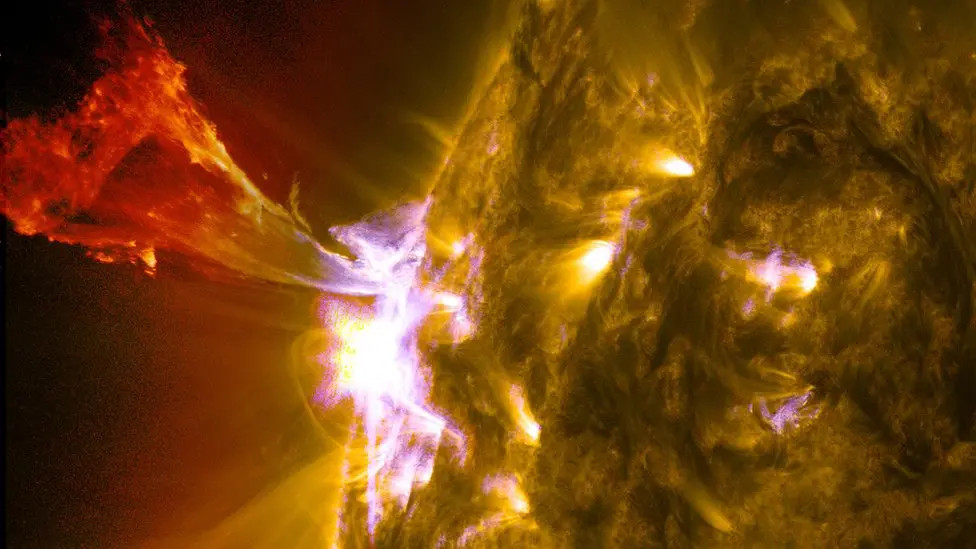
Every so often, our Sun reminds us who's boss. It might look calm and steady in the sky, but beneath that golden surface brews unimaginable power — energy on a scale that makes even our most destructive human inventions look like a child's sparkler. Right now, astronomers are watching a series of fierce solar outbursts that show the Sun at its most volatile — and magnificent. This week the Earth was hit by massive solar flares...X-Class and Aurorae were seen in most lower and mid states of Australia.
These aren't gentle flares or mild solar hiccups, they're what scientists call X-class solar flares, the strongest type our star can produce. In the blink of an eye, an X-class flare can unleash 10²⁵ joules of energy. To put that into something we can grasp, that's the equivalent of around 160 billion Hiroshima bombs detonating at once. It's enough raw energy to power the city of Sydney for about 50,000 years — every light, train, air conditioner and coffee machine running flat out, day and night.
And it all happens in minutes.
When the Sun releases that kind of power, the explosion can send shockwaves racing through space, supercharging particles and flinging them toward the planets. If one of these blasts happens to be pointed in our direction, it can ripple through Earth's magnetic field and atmosphere, playing havoc with our technology — but also creating those breathtaking curtains of colour we call the aurora australis and aurora borealis.
It's staggering to think this roaring ball of gas 150 million kilometres away still has the power to reach across that vast gulf and flicker our lights, fry our satellites, and paint the sky above Tasmania in eerie, shifting shades of red and green.
For all its beauty, the Sun is a dangerous neighbour. Its outer atmosphere, the corona, can reach temperatures of over a million degrees Celsius — far hotter than the surface itself. There's no solid ground there, no fiery "flames," just boiling plasma — charged gas twisted and whipped by magnetic forces that would make a supercomputer blush. When those magnetic fields snap, they release their pent-up energy in one of these colossal flares, and sometimes hurl enormous clouds of particles — coronal mass ejections — hurtling through the solar system.
Compared to that, the entire combined output of human civilization is nothing. The total energy consumption of every nation on Earth over many years still wouldn't equal one major solar outburst. And yet, we rely on this same fiery monster every second of our lives. Without its steady glow, there'd be no warmth, no life, no Earth as we know it.
Our Sun isn't just a source of light — it's a nuclear powerhouse, fusing over 600 million tonnes of hydrogen into helium every second. Each second! The energy from that fusion radiates outward, taking thousands of years to reach the surface, then just over eight minutes to cross space to Earth. It's what feeds our weather, grows our food, and keeps us alive. Yet even with all that energy pouring out, the Sun barely notices us.
Sometimes, when an X-class flare erupts, we get a brief, humbling reminder of where we sit in the cosmic order. Our satellites scurry into safe mode. Power grids brace for surges. Astronauts aboard the International Space Station retreat to shielded areas. Down here, we look up at the shimmering aurora and marvel — often unaware that we're witnessing the fallout of an event so powerful it defies imagination.
The Sun has been performing this fiery dance for more than four and a half billion years, and it will continue long after we're gone. It's both our life-giver and a reminder of the sheer scale of the universe's power — raw, relentless, and beautiful.
So, next time you hear about an X-class solar flare, picture it for what it really is: the Sun sneezing with the force of a few hundred billion nuclear blasts — and we just happen to be sitting in the cosmic splash zone.
Space Junk: The Growing Problem Above Our Heads

If you think pollution is only a problem down here, take a look up. Earth's orbit has become a cosmic junkyard — a floating scrapyard of old satellites, rocket parts, and fragments from decades of launches. Experts now warn that space junk is falling back to Earth more often than ever before, sometimes in fiery streaks that light up the night sky, and occasionally in dangerous near-misses with aircraft or populated areas.
According to tracking agencies, there are more than 36,000 pieces of debris larger than 10 centimetres currently orbiting Earth, and millions of smaller fragments whizzing around at speeds up to 28,000 kilometres per hour. Even a bolt the size of a marble can punch a hole through a spacecraft. The problem is getting worse: every new satellite launch, collision, or explosion adds to the clutter, increasing the risk of what scientists call the "Kessler Syndrome" — a chain reaction of collisions that could render certain orbits unusable for decades.
Recently, incidents of space junk re-entering Earth's atmosphere have become alarmingly common. In some cases, burnt fragments have been found in farmers' fields, backyards, and even near busy roads in Australia. The odds of being struck are still astronomically low, but the frequency of debris falls is climbing as old satellites and rocket stages lose altitude.
This orbital pollution also poses a major hazard to active satellites, the International Space Station, and future space missions. Operators are constantly performing evasive manoeuvres to avoid collisions — a costly and risky routine. The global satellite economy, which supports everything from GPS to weather forecasting, depends on a safe orbital environment that's rapidly deteriorating.
So, what can we do about it? One promising idea comes from researchers studying ion beam technology — using focused streams of electrically charged particles to gently nudge pieces of debris out of harm's way. The concept works like a "tractor beam" in reverse, applying just enough force to push junk into lower orbits where it can safely burn up in the atmosphere. It's still in the experimental stage, but early studies suggest it could be an effective and non-destructive cleanup tool.
Other methods are being tested too: nets, harpoons, robotic arms, and even drag sails designed to slow down derelict satellites. But while the technology catches up, experts agree the real solution starts with prevention — designing satellites that can de-orbit themselves, coordinating launches more responsibly, and enforcing international agreements to limit debris creation.
The irony is hard to miss: humanity has managed to pollute not just land, sea, and air, but space itself — the one place we once looked to for inspiration and progress. If we don't act soon, our "final frontier" may become too crowded for exploration. Cleaning up the mess we've made above Earth might just be one of the biggest environmental challenges of this century.
What Would Happen If You Fell Into a Black Hole?

Picture this: somewhere out there in deep space, the universe has a few places where the rules just stop working. Gravity goes haywire, time slows down, and light itself gets trapped like a fly in honey. Welcome to the weirdest show in the cosmos—the world of black holes.
A black hole is what's left when a massive star rns out of gas and collapses in on itself. All that matter, millions of Suns' worth, gets squeezed into a space smaller than our little town of Wauchope. The result? A cosmic vacuum cleaner so powerful it doesn't just suck in matter; it swallows space and time themselves. Step too close, and you're history.
The whole idea started as a "what if" in Einstein's equations over a century ago. Even the great man thought nature would never allow such madness but a few decades later, astronomers spotted stars behaving as though they were being pulled by invisible partners. Something was there, massive, unseen, and hungry. In 1971 our first confirmed black hole was found. Suddenly, science fiction had become science fact.
Then came 2019, the year we actually saw one! The Event Horizon Telescope captured a glowing orange ring of gas circling a black hole a distant galaxy, with a black centre that looked like an eye peering into infinity. That shadow wasn't a hole in space, it was the edge of the ultimate trap, the "event horizon," where even light can't escape.
Black holes come in all sizes, a lot are supermassive, millions or even billions of times heavier than the Sun. One of these monsters sits in the middle of our Milky Way galaxy. Thankfully, it's in a good mood and keeps its distance.
Here's the fun part: black holes mess with time. The closer you get, the slower time moves. Spend a few hours orbiting near one, and everyone else at home you left behind would be centuries older! Fantastic? You bet! It's the universe's ultimate time warp. Doctor Who would feel right at home.
But what if you could use a black hole as a shortcut to somewhere else in the universe? This is where wormholes come in—the stuff of wild imagination and serious science. In theory, a black hole might connect to a "white hole," a kind of cosmic exit ramp where everything it swallows pops out again—somewhere, somewhen else in the universe. Think of it as a space-time tunnel, a cosmic trapdoor to another galaxy or even another era.
Even if they do exist, surviving one would be another matter entirely. But it's a fun thought: maybe somewhere, in the far reaches of the cosmos, there's a gateway waiting, one you could dive into and come out billions of light-years away. Wow! Serious stuff huh?
For all their dark reputation, black holes also help sculpt galaxies, power jets of energy that light up space, and keep the universe in motion. They're nature's way of reminding us that not everything is meant to be understood.
So yes, black holes are terrifying, but they're also dazzlingly beautiful. They bend space, twist time, and stretch imagination. And who knows, maybe one day, someone will take the ultimate plunge… and find out what's really on the other side.
China's Race to the Moon: Astronauts by 2030
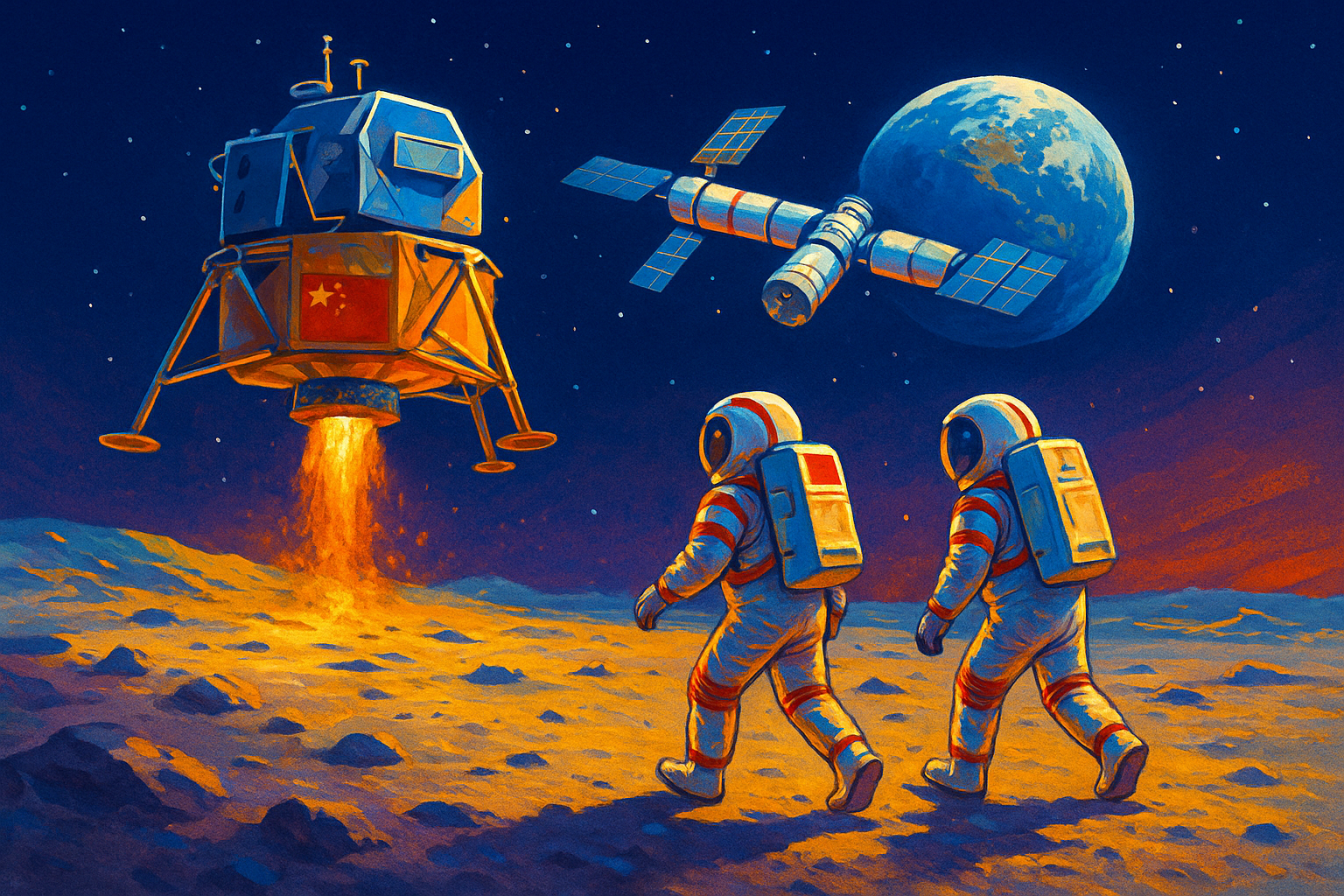
China has reaffirmed its bold promise: it will land astronauts on the Moon by 2030. Far from being a vague dream, the country's space agency says the plan is moving ahead on schedule, with rockets, landers, and space suits already in advanced stages of testing. The announcement came as China prepared to launch a new crew to its Tiangong Space Station — a sign that the nation's space ambitions are expanding fast.
The foundation for China's lunar effort is the Long March 10, a powerful new heavy-lift rocket now under development. It's designed to carry both astronauts and cargo beyond Earth orbit, a crucial step for any lunar mission. Engineers are also building a two-person lunar lander, code-named Lanyue, capable of ferrying astronauts from lunar orbit down to the surface and back. This lander, tested at a simulated lunar site, will serve as a life-support and operations hub during short surface stays. Matching the hardware are newly designed moon-landing suits, built to withstand extreme heat, radiation, and the abrasive lunar dust that defeated Apollo's fabric decades ago.
Zhang Jingbo, spokesperson for the China Manned Space Program, said that all key elements are "progressing smoothly," and that the 2030 landing target remains firm. "Our fixed goal of China landing a person on the Moon by 2030 is unshakable," he declared.
Meanwhile, the Tiangong Space Station — orbiting roughly 400 kilometres above Earth — continues to serve as a training ground for China's astronauts. The latest crew includes veteran flyer Zhang Lu and first-timers Wu Fei and Zhang Hongzhang, who will spend six months aboard the outpost. Alongside their experiments, they'll be studying how long stays in microgravity affect living organisms — even bringing along four mice for research on reproduction and adaptation in space. Every Tiangong mission helps refine the technology and experience needed for longer, deeper missions to come.
Beyond the 2030 landing, China's plans stretch much further. It has outlined a vision for a permanent International Lunar Research Station — a joint venture with Russia and possibly other nations — to be built near the Moon's south pole. Future missions could install solar arrays, mining systems, and even a small nuclear power source to support sustained habitation. Officials describe it as a base for science, exploration, and resource use — but also a symbol of China's arrival as a top-tier space power.
China's progress has been steady and deliberate. In recent years it has mastered docking, long-duration orbital flights, and robotic lunar landings — achievements that took decades for other spacefaring nations. From the Chang'e robotic explorers to the Tiangong space station and the planned Long March 10 rocket, each project forms a clear step in a long-term strategy.
While the United States pushes ahead with NASA's Artemis program, aiming to return humans to the Moon later this decade, China is taking a parallel, independent path. It's a new kind of space race — less about Cold War prestige and more about influence, science, and future resources. If successful, China could become the second nation ever to land humans on the Moon, half a century after Apollo 17.
The global implications are enormous. A Chinese presence on the Moon would reshape international space cooperation, drive new technology development, and possibly open up lunar exploration to broader participation from Asia and beyond.
Whether it happens in 2030 or shortly after, one thing is clear: China's space program has momentum, discipline, and purpose. Its next "giant leap" isn't just about reaching the Moon — it's about staying there.
Shedding Light — or Causing Alarm? The Controversial Plan to Launch 4,000 Space Mirrors

A California startup named Reflect Orbital has stirred intense debate with its bold—and some say dangerous—plan: to deploy a constellation of 4,000 giant mirrors in low-Earth orbit, reflecting sunlight back down to Earth. The goal? "Light on demand" after sunset and before sunrise, boosting solar power generation, aiding agriculture, and even lighting up disaster zones. But many scientists and environmental experts are sounding serious alarms. The Times of India+3Space+3Gadgets 360+3
A Vision of Endless Illumination
Reflect Orbital proposes starting with a demonstration mission called EARENDIL-1, tentatively launching in 2026. This test satellite would carry an 18 × 18 meter mylar mirror (about 60 × 60 feet) that can unfold in space. Space+2NextBigFuture.com+2 The plan is ambitious: once the technology proves itself, the company wants a fleet of 4,000 of these mirror-satellites in a sun-synchronous orbit, running along Earth's day–night boundary. Space
By precisely tilting these mirrors, the company says it could reflect sunlight onto specific 5-kilometer-wide areas of Earth's surface. The lighting would be "highly localized" and time-limited, according to Reflect Orbital. TechSpot+2Gadgets 360+2 Their business pitch includes: extending daylight for solar farms (boosting renewable energy), helping agriculture by giving crops more light, providing urban lighting after dark, and even offering emergency illumination after disasters. Gadgets 360+2NextBigFuture.com+2
Why Scientists Are Worried
Despite the optimistic vision, the scientific community has strong objections—and for good reason. Here are the main points of concern:
-
Extreme Light Pollution
Astronomers warn these space mirrors could vastly brighten the night sky. The reflected beams are estimated to be four times brighter than a full moon, creating artificial "moving stars" that would streak across the sky. Space Robert Massey of the Royal Astronomical Society said the plan is "pretty catastrophic" from an astronomical standpoint. TechSpot+1 -
Disruption of Wildlife and Ecosystems
Beyond astronomy, ecologists argue that this artificially extended daylight could disrupt natural cycles. Many species rely on the day–night rhythm: foraging, reproduction, migration, and rest are all tied to natural light. Space+1 The constant or semi-constant glare may confuse animals and upset delicate ecological balances. Space -
Impact on Human Life
There are also human concerns: prolonged or unpredictable nighttime illumination could interfere with sleep patterns, circadian rhythms, and even aviation safety. Live Science -
Technical and Environmental Risk
Skeptics question the feasibility of managing 4,000 large, lightweight reflectors in orbit. Issues include: orbital debris, satellite control failures, and the difficulty of precisely directing reflected sunlight without mistake. Live Science+1 Moreover, if not carefully controlled, these mirrors could become environmental hazards themselves. Live Science -
Precedent and Governance
Critics also worry about the precedent this sets. Unlike unintentional light pollution from satellite constellations (such as those launched for broadband), with Reflect Orbital the purpose is to brighten the night — making light pollution a feature, not a side effect. NASA Space News Questions linger: Who regulates such a system? What happens if the technology is misused or scaled uncontrollably?
The Company's Response
Reflect Orbital says it's aware of these concerns and is taking steps to mitigate risk. For instance:
-
Their reflections would focus on specific 5-km zones, rather than broadly illuminating large swathes of Earth. Space
-
After passing over a target, the satellite mirror would tilt away, reducing unintended illumination. Space+1
-
For their 2026 test flight, they plan to work with experts to assess ecological and environmental effects. Space
Still, many in the scientific community are not convinced that these measures are enough and are calling for rigorous environmental reviews before any large-scale deployment.
Bigger Picture: Geoengineering or Risky Experiment?
This proposal is part of a broader idea known as solar geoengineering — manipulating sunlight to achieve certain outcomes on Earth. While many geoengineering concepts focus on dimming sunlight (to cool the planet), Reflect Orbital's mirrors do the opposite: redirect it, concentrating light where and when it's needed. Space
That makes this case unusual, and especially controversial. It raises not only technical and environmental questions, but moral ones, too: should private companies be allowed to deploy technology that fundamentally changes how Earth is lit at night? And who controls such power?
Conclusion: Reflect Orbital's plan to launch 4,000 massive space mirrors is undeniably visionary — blending renewable energy innovation with cutting-edge aerospace engineering. But vision without careful oversight could turn into a risky experiment with global consequences. The astronomical, ecological, and social stakes are high, and as scientists rightly warn, "from an astronomical perspective, that's pretty catastrophic." . As the company moves toward its first test mission, what happens next may set precedents not just for clean energy, but for who gets to control the night sky.
Burning Space Junk Lands Near WA Mine – When the Sky Falls

It's not every day that something literally falls out of the sky in the Australian outback — but that's exactly what happened near a mine east of Newman, Western Australia, when workers stumbled across a smoking, charred object lying in the red dirt. The mysterious find, reportedly made of carbon fibre and metal, looked like something straight from a sci-fi movie — except this one was real, and still warm.
Police and emergency services quickly secured the area, while experts from the Australian Space Agency were called in to take a closer look. Early indications suggest the object is indeed "consistent with known space re-entry debris." Translation: it's probably a bit of someone's rocket or satellite that's just finished its final lap around Earth.
The Bureau of Transport Safety has ruled out any connection to aircraft, which leaves us looking skyward — literally. Engineers believe it could be part of a pressure vessel or propellant tank, the sort of hardware found on booster stages used by commercial launchers. These components are often made of composite materials like carbon fibre to reduce weight, and when they re-enter, most of them burn up harmlessly. But sometimes, just sometimes, gravity wins.
And WA seems to have a knack for catching them. In 1979, chunks of NASA's Skylab rained down across the state, turning Esperance into a global headline. The locals famously fined NASA $400 for littering — and it took the Americans more than 30 years to pay it. Since then, fragments from various space missions have turned up in paddocks and deserts across Australia, quietly reminding us that our wide open spaces make for excellent cosmic landing pads.
How Common Is It?
Surprisingly, not very. Around 100 tonnes of man-made material re-enters Earth's atmosphere each year, but nearly all of it burns up before reaching the ground. Statistically, the chance of any one person being hit by falling debris is about one in a trillion. That's roughly the same odds as being struck by lightning while winning the lottery on your birthday. Australia's vast unpopulated regions do, however, make it more likely for us to find the pieces that survive.
Could It Be Linked to a Recent Launch?
Quite possibly. There's been a flurry of launches from companies like SpaceX, Rocket Lab, and China's Long March series in recent months. Each rocket stage or satellite that completes its mission eventually comes back down — sometimes controlled, sometimes not. Engineers from the Space Agency will be checking tracking data to match the find with any recent re-entry events. Objects re-entering at the wrong angle can survive long enough to scatter fragments over large areas. It's a messy reminder that what goes up doesn't always stay up.
Should We Be Worried?
Not yet — but it's worth paying attention. Earth's orbit is becoming a cosmic junkyard, with more than 30,000 pieces of debris large enough to track and millions of smaller fragments zipping around at 25,000 kilometres an hour. Even a bolt the size of a marble can punch a hole in a spacecraft at that speed. Space agencies around the world are now tackling what's called "space debris mitigation," designing satellites that burn up completely or de-orbit safely.
Still, when a blackened cylinder falls out of the sky, it's a wake-up call — a reminder that our spacefaring ambitions come with earthly consequences. As humanity pushes further into orbit, the line between "up there" and "down here" keeps getting thinner.
So, if you're wandering the Pilbara and spot something shiny sticking out of the dirt, don't panic — and don't poke it with a stick. Call the authorities, take a photo, and remember: in Western Australia, even the sky likes to drop in unannounced.

**Leave a message or comments on this website Email me directly : www.davereneke@gmail.com
NB/ Please Include Your Name and Email address If You Require An Answer.
'ASTRO DAVE' RENEKE - A Personal Perspective

I've often been asked what I do, where I've been and what sort of activities I've engaged in throughout my 50 years involvement in astronomy and space. Here is an interview i did with Delving with Des Kennedy on Rhema 99.9 recently.
David Reneke, a highly regarded Australian amateur astronomer and lecturer with over 50 years of experience, has established himself as a prominent figure in the field of astronomy. With affiliations to leading global astronomical institutions,
David serves as the Editor for Australia's Astro-Space News Magazine and has previously held key editorial roles with Sky & Space Magazine and Australasian Science magazine.
His extensive background includes teaching astronomy at the college level, being a featured speaker at astronomy conventions across Australia, and contributing as a science correspondent for both ABC and commercial radio stations. David's weekly radio interviews, reaching around 3 million listeners, cover the latest developments in astronomy and space exploration.
As a media personality, David's presence extends to regional, national, and international TV, with appearances on prominent platforms such as Good Morning America, American MSNBC news, the BBC, and Sky News in Australia. His own radio program has earned him major Australasian awards for outstanding service.
David is recognized for his engaging and unique style of presenting astronomy and space discovery, having entertained and educated large audiences throughout Australia. In addition to his presentations, he produces educational materials for beginners and runs a popular radio program in Hastings, NSW, with a substantial following and multiple awards for his radio presentations.
In 2004, David initiated the 'Astronomy Outreach' program, touring primary and secondary schools in NSW to provide an interactive astronomy and space education experience. Sponsored by Tasco Australia, Austar, and Discovery Science channel, the program donated telescopes and grants to schools during a special tour in 2009, contributing to the promotion of astronomy education in Australia. BELOW Is the recorded interview


